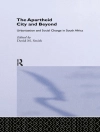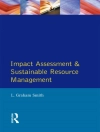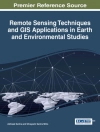This volume synthesizes critical environmental challenges of dynamic earth and human environment systems in South Asia emphasizing geographical dimensions. It deals with spaceborne monitoring, climate, ecohydrology, forests and biodiversity, land-use and land-cover change (LUCC), natural hazards, and disasters in order to contribute towards a sustainable future. The contributions range from traditional field techniques to the use of remote sensing and geographic information systems.
The book integrates environmental attributes relating the past, present, and future of South Asia broadly based on biophysical and human dimensions in spatio-temporal perspectives. The monitoring of natural hazards and climate issues is considered a vital component in the context of environmental geography, especially in observation and understanding of climate and water-induced disasters. It is important to communicate the advances in geoscience techniques to increase the resilience of the vulnerable society of South Asia and to promote livelihood security. The sustainability of South Asia depends strongly on the earth environment, and thus the development of geo-environmental monitoring is critical for a better understanding of our living environment. The aim of the book is to present dynamic aspects of environmental geography to contribute to future earth initiatives in South Asia.
Tabla de materias
Disaster Mitigation and Management and Importance of Earth Observation.- Exclusionary Urbanisation in South Asia.- Prioritizing Watersheds for Sustainable Development in Swan Catchment Area, Himachal Pradesh, India.- Deglaciation and Impact of Extreme Rainfalls on Recent Relief Transformation of the Upper Pindari Valley – The Kumaun Himalaya, India.- Riverbeds Level Changes in the Margin and Foreland of the Darjeeling Himalaya During the Years with a Normal Monsoon Rainfall.- Bio climate of the Andaman Islands and Its Impact on the Lives of the Native and Non-native Populations of the Archipelago.- Spatial and Temporal Variations of Rainfall in the Southern Part of the Meghalaya Plateau.- Rainfall Structure for Cherrapunjee and Mawsynram in Northeast India.- Land Use and Land Cover Changes in the Area with the Highest Rainfall in the World (Meghalaya Plateau, India) – Causes and Implications.- Maximum Flow and Maximum Specific Flow in a Small Catchment Affected by an Extreme Rainfall Near Cherrapunjee in Northeast India.- Altitudinal Zonation of Floral Biodiversity and its Conservation Pattern in Mizoram, North-East India.- The Distribution and Management of Forests in Arunachal Pradesh, India.- Institutional Dimensions and Changing Role of Forest Management Governance in Dehradun Valley.- Organic Agriculture from the Perspective of Small Farmers’ Livelihood Strategies: Two Cases from Central and South India.- Integrated Coastal Zone Management in North Kanara Coast.- Anthropogenic and Environmental Disturbance Factors in the Annapurna Conservation Area of Nepal.- Mangrove Iversity Across Salinity Gradient in Negombo Estuary-Sri Lanka.- Nepal: Urban Environment Analysis.- Fighting Floods for Survival: Experiences of Suf-fering People in Bangladesh.












